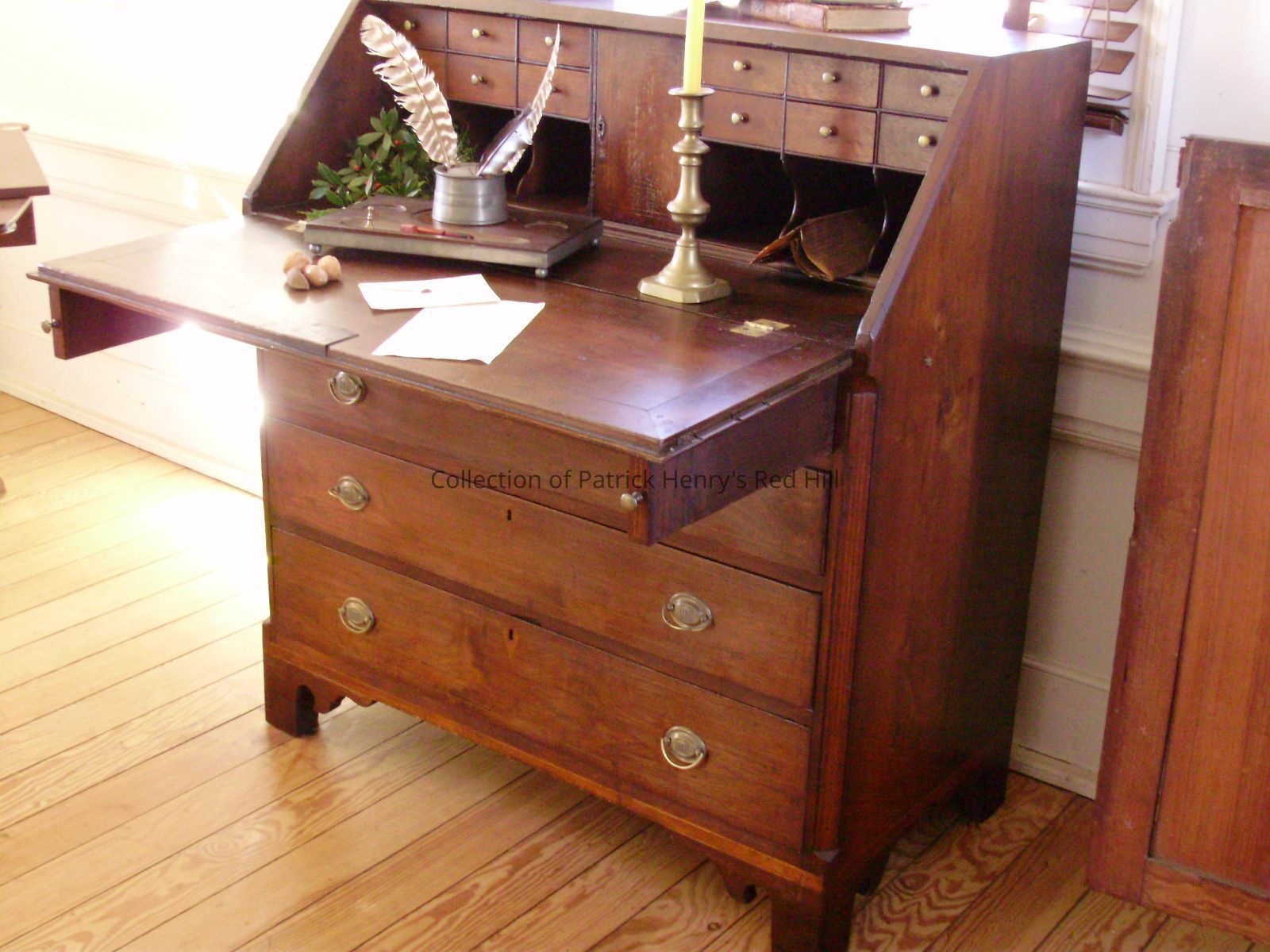Notes
This desk was probably made in Virginia in the late 18th century. Before 1968, it was owned by Ella Carter, who had a brother-in-law named Patrick Henry Carter. The Carters may have been descended from Dr. James W. Carter (1826–1862), who was married to Laura Helen Henry (1836–1856), the daughter of John (1796–1868) and Elvira McClelland Henry (1808–1875). Laura Henry Carter died a year after she was married without bearing any children. The Ella Carter family would have only had a marriage connection to the Patrick Henry family.
Ella Carter always claimed the desk came from Red Hill, but she had no documentation to support this. At her estate sale in 1968, Louise Terrell purchased the desk. She maintained the family legend that it came from Red Hill and asked that it be returned there after her death.
A few years after her death, her daughter, Margaret Terrell Belcher, offered to donate the desk to the Patrick Henry Memorial Foundation. Although no direct connection to Patrick Henry could be proved, the desk is a fine example of 18th-century regional work. The Patrick Henry Memorial Foundation accepted the desk in March 2007.
